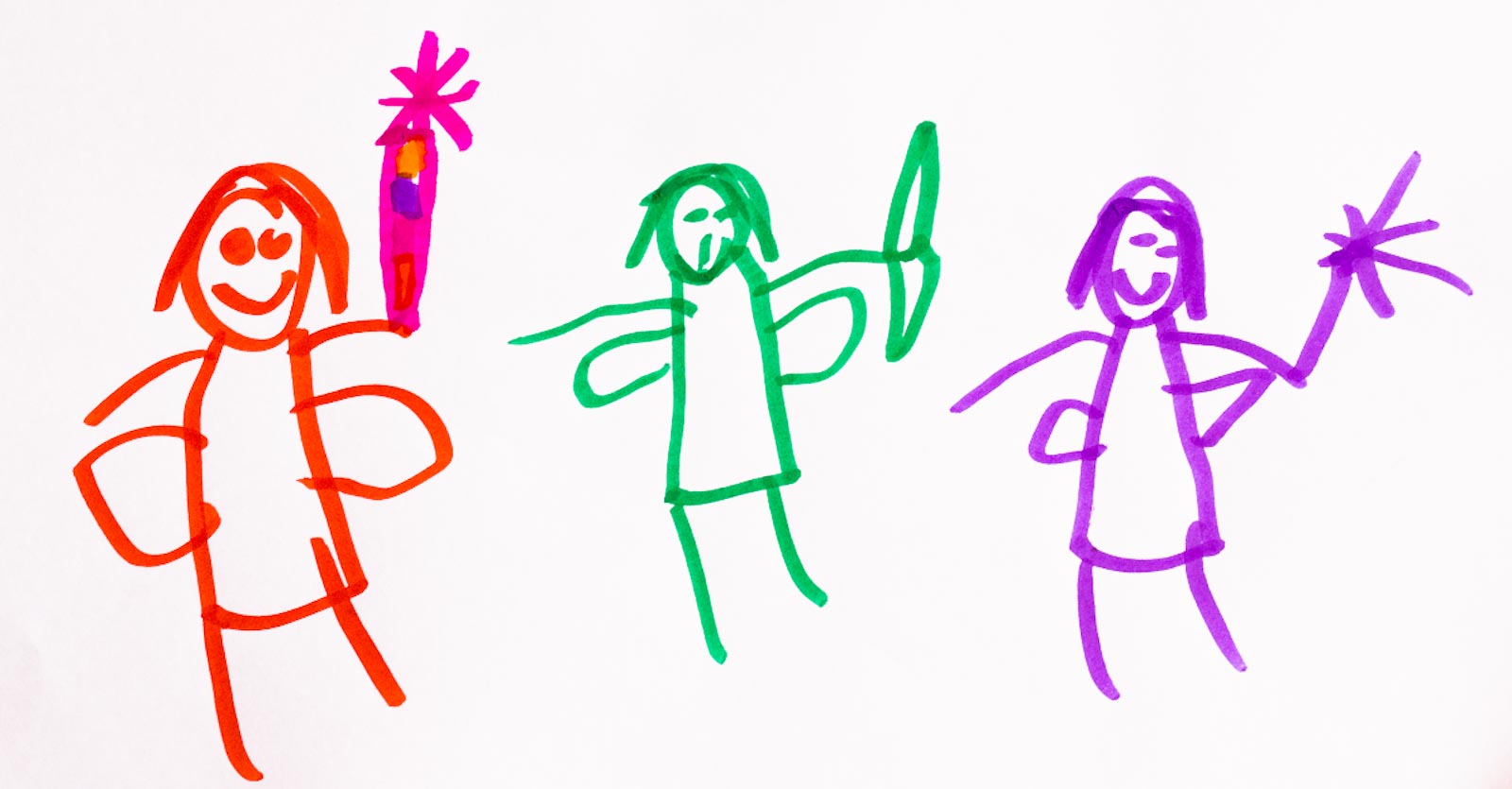
Fairies have a long history in European folklore and storytelling, however most children in Australia know about fairies from books, movies and television.
Early childhood education can support children who are interested in fairies and other magical creatures. The Early Years Learning Framework (EYLF) links with fairies as they promote curiosity, confidence and imagination (4.1).
Learning experiences
Make sustainable fairy wands
Educators help children:
- draw and cut stars from an old cardboard box
- collect sticks from the garden
- tape one star to the end of each stick
- glue natural decorations, like flower petals, on the stars
- tie a bow around each stick, using a piece of ribbon or raffia
- wave the wands and cast magical spells!
Mix magical potions
Help children make fairy potions by mixing ingredients in glass jars, wooden bowls or pretty containers. Children can use teaspoons or droppers, and will require assistance and supervision with some of these ingredients:
Baking soda and vinegar, cornflour, essential oils, flower petals, food colouring, glitter, honey, juice, shampoo or conditioner, soap, vanilla or peppermint extract, and water.
Write a poem
Fairies are associated with pretty and descriptive words, which can be used to write poems. Early childhood educators don't need to feel daunted about writing poems with young children. Follow this formula:
- Start with a simple sentence describing what fairies look like.
- Add a line about where fairies live.
- Describe something that fairies do.
- Write how fairies make you feel.
An example:
Tiny fairies with lovely wings
Under flowers and toadstools
Dancing in the moonlight, spreading magic everywhere
My heart fills with love.
Look for Fairies "at the bottom of your garden"
Pretend to look for fairies in the quietest, most leafy part of your garden. Ask children for their suggestions on how to find fairies there. Use props like a fairy wand, "fairy food", a magnifying glass, binoculars, or a butterfly net.
Many childcare centres create their own permanent fairy gardens to utilise small, unused corners of their property. This could be a child-led project where children are heavily involved in the concept, design, planning and personalisation of the space. Fairy garden creation offers so many learning opportunities and extensions, this project could evolve over the entire year.
Consider landscaping the area with:
- natural materials like rocks and tree stumps for children to sit on
- figurines, fairy houses, and solar-powered fairy lights
- flowers and plants
- a water feature
- a birdhouse, bee house, or bird feeder
- a small bridge
- a hammock.
Resources
Picture books
Backyard Fairies by Phoebe Wahl
